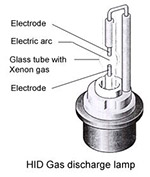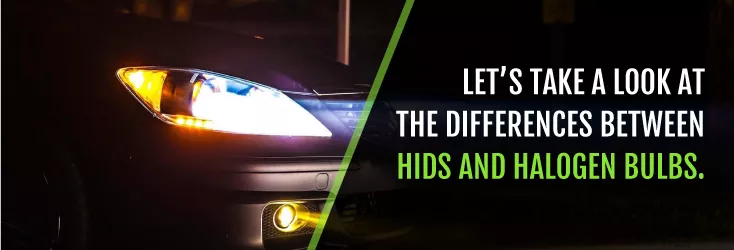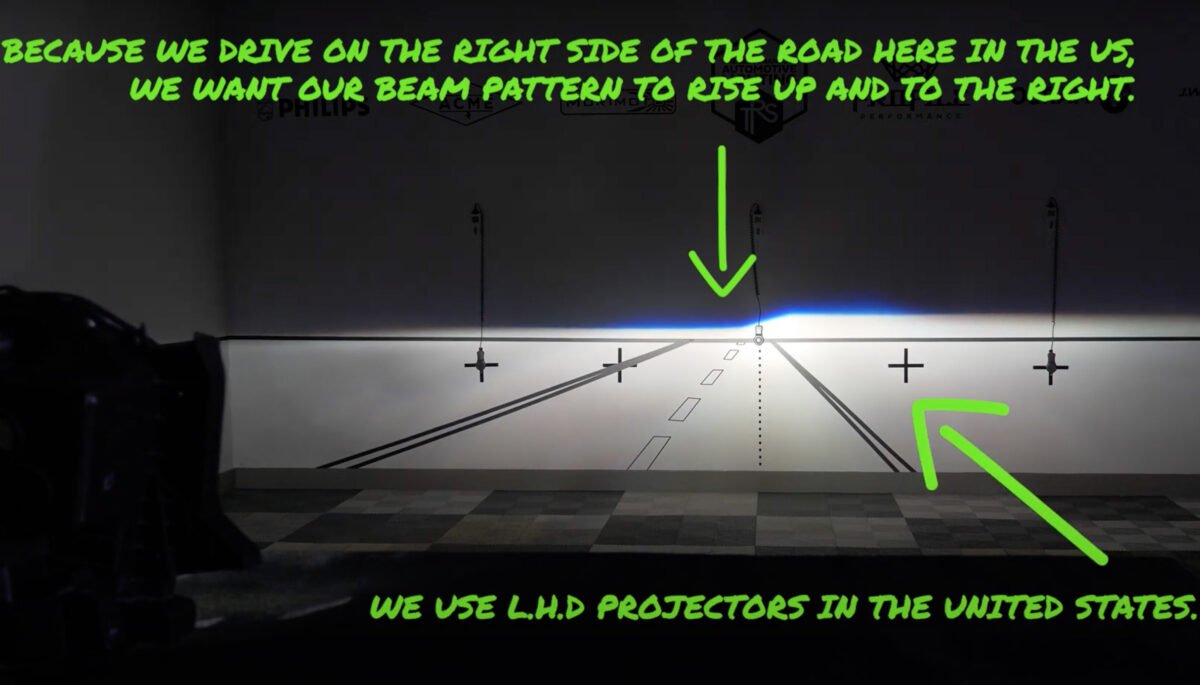HID headlights work by sending an electrical discharge between two electrodes through a plasma or ionized gas. This process creates light that is brighter and more efficient than traditional halogen headlights.
HID headlights are popular among car enthusiasts for their superior illumination and stylish appearance. HID headlights, short for High-Intensity Discharge headlights, have gained popularity in the automotive industry due to their superior brightness and energy efficiency. Unlike traditional halogen headlights that use a filament to produce light, HID headlights work by creating an electrical arc between two electrodes inside a quartz tube filled with gas and metallic salts.
This arc produces a bright light that is emitted through the headlight lens, providing improved visibility for drivers. In addition to their performance benefits, HID headlights also offer a modern and sleek aesthetic, making them a popular choice for car enthusiasts looking to upgrade their vehicle’s lighting system.

Credit: www.bulbs.com
The Basics Of Hid Technology
HID headlights work by utilizing high intensity discharge technology. This technology involves the concept of high intensity discharge, which means that the bulbs produce a brighter and more intense light than traditional halogen bulbs. The components of HID headlights include a bulb, ballast, and starter. The ballast is responsible for regulating the voltage and current, while the starter ignites the bulb. The bulb contains gas and metallic salts, which vaporize and produce light when electricity flows through them. HID headlights are preferred over traditional halogen headlights due to their brighter and more efficient lighting, but they do have some disadvantages such as cost and potential glare to other drivers.

Credit: blog.theretrofitsource.com
The Inner Workings
The inner workings of HID headlights involve an electrical discharge and the use of gas and metallic salts to create light. HID stands for high intensity discharge, and it refers to a type of lighting technology that produces bright and efficient illumination.
When electricity enters the base of an HID lamp through a ballast, it flows into a tube that contains gas and metallic salts. The gas helps initiate the strike of light, and as it heats up, it vaporizes the metallic salts, creating the intense light emitted by HID headlights.
HID headlights offer several advantages, such as increased visibility and longer lifespan compared to traditional halogen headlights. However, they also have some disadvantages, including the potential for reduced brightness over time and the risk of blinding other drivers if not properly installed.
Overall, understanding the inner workings of HID headlights can help car owners make informed decisions when it comes to selecting the right lighting technology for their vehicles.
The Role Of The Ballast
The ballast plays a crucial role in the functioning of HID headlights. It is responsible for stabilizing the current and voltage that is supplied to the HID bulbs. The ballast ensures that the electrical flow is regulated and consistent, allowing the bulbs to operate efficiently.
When the HID bulbs are ignited, the ballast helps to initiate the process by providing the necessary electrical charge. The bulbs contain gas and metallic salts, which are vaporized and create the intense light output. The ballast ensures that the electrical current is properly controlled and regulated throughout this ignition process.
In conclusion, the ballast is an essential component in HID headlights as it stabilizes the current and voltage, allowing the bulbs to function optimally. It ensures a consistent and regulated flow of electricity, enabling the ignition process of the bulbs and the production of high-intensity light.

Credit: knowhow.napaonline.com
Advantages Of Hid Headlights
Advantages of HID Headlights:
- Brightness: HID headlights are known for their superior brightness compared to halogen headlights. They provide a clearer and more focused beam of light, enhancing visibility on the road.
- Efficiency: HID headlights consume less power than halogens, making them more energy-efficient. This not only reduces strain on the vehicle’s electrical system but also helps in improving fuel efficiency.
- Longevity: HID headlights have a longer lifespan compared to halogens. They are designed to last up to three times longer, reducing the frequency of bulb replacements.
Overall, HID headlights offer significant advantages in terms of brightness, efficiency, and longevity when compared to halogen headlights. Their superior performance makes them a popular choice among car owners looking for enhanced visibility and durability.
Common Misconceptions
There are many misconceptions about HID headlights that need to be addressed. One of the most common myths is that HID headlights are much brighter than LED headlights. In reality, the brightness of the headlights depends on the type of bulb used and the quality of the reflector. Another myth is that HID headlights are not safe because they blind other drivers. However, properly installed HID headlights are angled towards the road and use reflectors to ensure that the light shines down and not up.
When comparing HID and LED headlights, it is important to consider the advantages and disadvantages of each. HID headlights are more energy-efficient and last longer than LED headlights. However, LED headlights are more durable and produce less heat than HID headlights. Ultimately, the choice between HID and LED headlights comes down to personal preference and the specific needs of the driver.
One common misconception about HID headlights is that they are much brighter than traditional halogen headlights. While HID headlights do produce more light than halogen headlights, the brightness of the headlights depends on the type of bulb used and the quality of the reflector. Another myth is that HID headlights are not safe because they blind other drivers. However, properly installed HID headlights are angled towards the road and use reflectors to ensure that the light shines down and not up.
It is important to note that HID headlights can lose their brightness over time and eventually fail. If one headlight is significantly dimmer than the other or flickers before turning off completely, the bulb may be the culprit. Wiring and connectors can also become damaged due to age, wear, or exposure to the elements.
Challenges And Drawbacks
|
HID headlights can experience dimming and failure over time. One headlight may dim or flicker before going out completely. Wiring and connectors can also deteriorate with age, wear, and exposure. |
Proper Installation And Alignment
Proper installation and alignment of HID headlights are crucial for optimal performance. HID headlights work by sending an electrical discharge through gas and metallic salts to create light. Ensuring correct installation enhances visibility and safety on the road.
| How HID Headlights Work |
| Proper Installation and Alignment |
| Avoid glare by adjusting headlights properly. Reflectors help ensure visibility on the road. |
While HID headlights offer brighter illumination, proper alignment is key. Adjust the angle to avoid blinding other drivers. Reflectors play a crucial role in directing light downward for optimal visibility. Regular maintenance ensures consistent performance.
Upgrading To Hid Headlights
HID headlights work by creating light through an electrical discharge between two electrodes and through a plasma or ionized gas. This produces a brighter and longer-lasting light compared to traditional halogen headlights, making upgrading to HID headlights a popular choice for car enthusiasts.
| When upgrading to HID headlights, consider conversion kits for compatibility. |
| Professional installation ensures proper setup, but DIY can be cost-effective. |
Frequently Asked Questions
Are Hid Headlights Better Then Led?
HID headlights and LED headlights both have their advantages. HID headlights provide brighter and longer-range illumination, while LED headlights are more energy-efficient and have a longer lifespan. Ultimately, the choice depends on personal preferences and needs.
What Are The Disadvantages Of Hid Headlights?
HID headlights have a few disadvantages. Over time, they can lose brightness and eventually fail. Wiring and connectors can also become damaged. Additionally, HID lights that aren’t properly installed can blind other drivers, creating a safety hazard.
What Is The Problem With Hid Headlights?
The problem with HID headlights is that over time, the bulbs can lose their brightness and eventually fail. If one headlight is significantly dimmer or flickers before turning off completely, the bulb may be the culprit. Wiring and connectors can also become damaged due to age, wear, or exposure to the elements.
HID lights that point straight ahead can also blind other drivers, creating a safety hazard and a legal issue.
Why Are Hid Headlights Illegal?
HID headlights can be illegal when they point straight ahead and blind other drivers, creating a safety hazard. However, properly installed HIDs should be angled towards the road, and many use reflectors to ensure the light shines down and not up.
How Do Hid Headlights Work?
HID headlights work by producing light through an electrical discharge between two electrodes and a gas-filled tube.
Are Hid Headlights Better Than Led?
HID and LED headlights each have their own advantages, with HID lights providing intense brightness and LED lights offering energy efficiency.
What Are The Disadvantages Of Hid Headlights?
Disadvantages of HID headlights include a warm-up period, potential glare to other drivers, and the need for a ballast for operation.
Conclusion
HID headlights work by using high intensity discharge technology to create light. The process involves electricity arcing between two electrodes inside the lamp to produce a bright and efficient light source. Understanding how HID headlights work can help car owners make informed decisions about their vehicle lighting options.


Leave a Reply